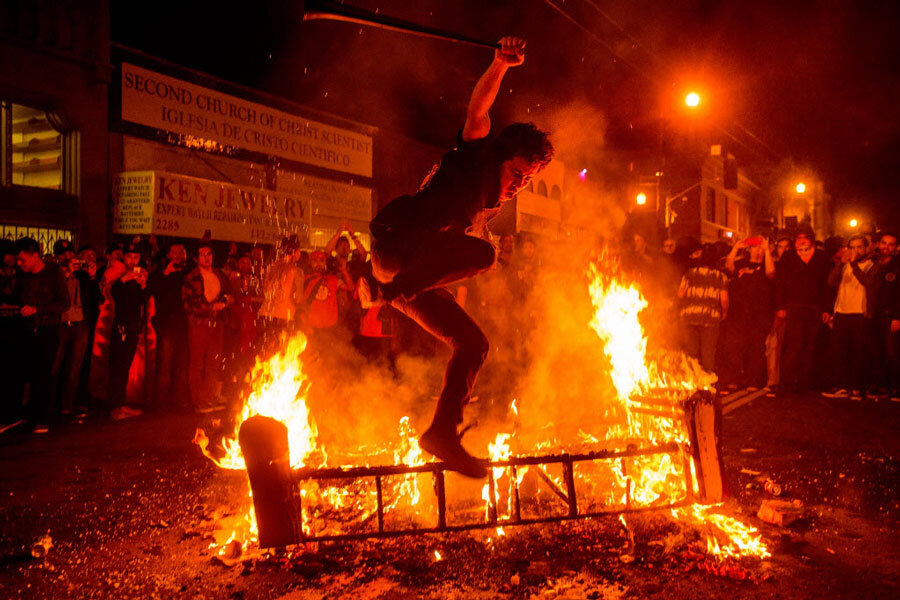Why did San Francisco's World Series celebration turn ugly?
Loading...
| Los Angeles
After the Giants squeaked out a seven-game World Series win Wednesday night over the Royals, hometown revelry should have made the players proud, right?
Not quite. Instead of covering the home team in appreciative glory, fans and others took to the winding San Francisco streets for a night of celebration that quickly turned destructive.
Bonfires lit up around the city, at least one person was shot, municipal buses had windows smashed, and police made multiple arrests. Social media exploded with snapshots of fans engaged in potentially lethal behavior such as swinging from live utility lines.
While many fans simply marched down Market Street, residents wary of how events might proceed took precautions and stayed away.
What’s the matter, one might ask. After all, the home team triumphed. But says at least one San Francisco local, we are in a different age where increasingly, everyone wants to be part of the action – it's not enough to just be a fan anymore.
“I saw people setting off firecrackers and taking pictures of themselves,” says Mike Gilleran, executive director of the Santa Clara University Institute of Sports Law and Ethics, who lives in San Francisco.
He made a special effort to pick his college-age daughter up from a class, rather than allowing her to take the bus home after the game finished.
“We were driving as the last out happened and we heard the firecrackers start to go off right away,” he says.
Within a very short time frame, Professor Gilleran notes that he could sense the mood in the city shift.
“People were probably drinking and you could feel the mood get edgier,” he says, adding that they moved to get home quickly.
“We just wanted to hunker down and be away from the potential for something bad to happen,” he adds.
Rowdy fan behavior is not new, of course. Just look at the hooliganism that followed the Red Sox 2013 win and of course, decades of destructive soccer fan behavior overseas. Earlier this year, University of Connecticut fans smashed windows and streetlights after the Huskies won the NCAA championship.
These are the winning teams, so what turns happy fans into vandals?
This sort of behavior is more easily explained in the context of crowd behavior as much as sports fan behavior, says Dan Lebowitz, executive director of the Center for the Study of Sport and Society at Northeastern University in Boston.
“People take the cloak of crowd anonymity to allow themselves to do things they would not normally do if they were actually being accountable for themselves,” he says. This is accelerated when the individuals have already taken on a strong group identification by being a loyal team fan, he points out, adding “there is a very thin line between being a sports fan and a sports fanatic.”
Beyond that, there is a longstanding unspoken agreement that nighttime celebrations are a bit of a “time-out,” meaning an opportunity to let one’s hair down and escape social norms, says Professor Lebowitz.
“It’s somewhat like New Year’s Eve,” he says, in that people give themselves permission to act out and all is forgiven and forgotten the next day.
This does not excuse such behavior, he adds, “but it does give some insight into why it happens.”
By contrast, Kansas City Royals fans may have suffered their team’s nail-biting defeat, but they won the class act hands down over their West Coast counterparts.
Rather than take to the streets in disappointment, they remained in the stadium long after the game ended, chanting, “Thank you,” and “Let’s Go, Royals.”







